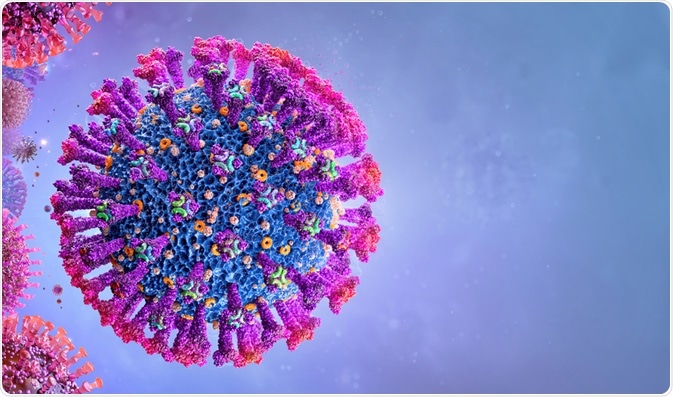Viruses can change. They can alter their genetic make-up. When these changes occur, the virus may become more or less of a threat to the human host. Virologists are therefore interested in tracking the evolution of the viral genome.
When a virus infects a host cell its goal is to replicate itself. The process begins with the copying of genetic material. In the viral cell, this process is especially prone to errors. Complex organisms deploy efficient ‘proof-reading’ mechanisms that allow for high-fidelity replication.
In the case of the SARS-CoV-2 virus (the virus implicated in the incidence of COVID-19), it is designated a single species, but there are differing kinds of ‘coronavirus’ that can infect the patient with essentially the same disease. These different kinds of viruses have been called mutants, variants, and strains which leads to conceptual confusion. This article looks at what we mean when we refer to a viral mutation.
Science Today: Virus Mutation | California Academy of Sciences
A viral mutation
A mutation occurs when there is a change to the genetic material ––either the DNA or RNA ––from the original normal or ‘wild type’ version of the genome of a particular organism or biological entity. The mutation could be entirely novel, or it could have occurred before.
It is natural for organisms to change and evolve. Geographic segregation is one mechanism by which distinct lineages (strain or variants depending on which is the preferred term) can arise. Mutations in the SARS-CoV-2 coronavirus were neither a novelty nor were they unexpected.
In SARS-CoV-2 coronavirus variants of concern (VOC) have arisen due to mutations that have caused changes to the spike protein of the virus. This is the part of the virus that attaches itself to the host ––in this case the human ––cell.
A viral mutant
Linguistic ambiguity occurs when the term mutant is used interchangeably with the terms strain, variant, or sub-species. Indeed, there are similarities between these types of biological objects, but also important differences as this article seeks to demonstrate. Organisms or biological entities whereby mutations re-occur or happen only rarely are referred to as mutants. But that label has a shelf life and is only employed for a limited amount of time after which the mutation is no longer considered to be a novelty.

Image Credit: Corona Borealis Studio/Shutterstock.com
Tracking viral mutations
Since the SARS-Cov-2 virus emerged from the city of Wuhan it has undergone genetic changes ––it has mutated. As a result, different variants have arisen. It is vital to keep a track of these mutations and resulting new variants to assess the ongoing risk to public health.
Not all variants are of immediate concern to public health experts. Some mutations may cause changes that do not pose an immediate threat in terms of the increased pathogenicity of an organism. In fact, some mutations may be deleterious to the pathogen itself. Experts nevertheless keep track of these viruses alongside other variants because there is a potential for this situation to change when the virus mutates again. Viral mutations are monitored by extensive sequencing of viral genomes isolated from patients across the globe.
The most well-known variants of the virus have arisen in England, Indian, California, and Brazil, for example. At any given time, there are multiple variants in existence and experts keep a close eye on all of them. Below are some of the VOC that have arisen during the COVID-19 pandemic:
The Delta variant (arising from Pango lineage B.1.6.17.2) originated in India. It was renamed the Delta variant to avoid negative associations with geographic localities in which a new type of virus or viral variant emerges. The city of Wuhan, China was the recipient of such negativity in the public consciousness, in the wake of the emergence of the SARS-CoV-2 coronavirus.
The Delta variant harbors potentially important mutations such as the L452R which has the potential to increase infectivity. It has been designated a VOC by the World Health Organisation (WHO) and the Centers for Disease Control and Prevention (CDC) considering its enhanced transmissibility ––this form of the virus harbors the potential to infect twice as many people compared to other variants of SARS-CoV-2. This version of the virus appears to be moving quickly and has already spread across the globe. There is little evidence that is variant (or any variant for that matter) causes more severe illness in its host.
It remains of acute concern because its increased potential to infect more people will lead to higher numbers of deaths in an unvaccinated population. Even in the case of vaccination, this risk is not eliminated. In September 2021 the Delta variant was designated the most contagious form of the SARS-CoV-2 coronavirus seen so far.
- Alpha variant (B. 1. 1. 7)
The Alpha variant was first detected in the city of Kent, UK, and has since spread to over 50 countries worldwide.
The Beta variant was first detected in South Africa and has since been seen in 20 other countries.
The Gamma variant was first seen in Brazil before being identified in 10 more countries.
The Alpha, Gamma, and Beta variants all share the same mutation ––the N501Y ––associated with an enhanced capacity for the virus to infect cells and to spread. Another mutation ––E484K ––has been detected primarily in the Beta and Gamma variants although its presence has been found in some Alpha cases. This mutation may help the virus evade the body’s immune system.
Mutations are a natural part of viral evolution. The changes are inevitable, and no treatment or vaccination program can offer a foolproof solution to fully evading viruses such as SARS-CoV-2. Not all changes are beneficial to the virus. In the case of those that do increase pathogenicity the best we can do is to keep a close eye on them and alter our medical response in lockstep.
References:
Further Reading
Last Updated: Dec 1, 2021